
Hours after the seawater off the Florida Coast fell calm following Dragon Endurance’s return to Earth last night, SpaceX kicked off the month of May in fine style as its 18th Falcon 9 of 2022 took flight in the year’s 18th week.
Liftoff of the “black(ened)-and-white” B1058 core—which found fame two years ago when it lifted NASA astronauts Doug Hurley and Bob Behnken aboard Dragon Endeavour for their historic Demo-2 mission to the International Space Station (ISS)—occurred at 5:42 a.m. EDT Friday from Pad 39A at the Kennedy Space Center (KSC) in Florida. In doing so, B1058 became only the third Falcon 9 bird to log a 12th voyage into space and, when one counts its single touchdown on solid ground last January, has now landed 11 times on SpaceX’s Autonomous Spaceport Drone Ship (ASDS). Those prior missions were visibly evidenced by its black-as-soot appearance.
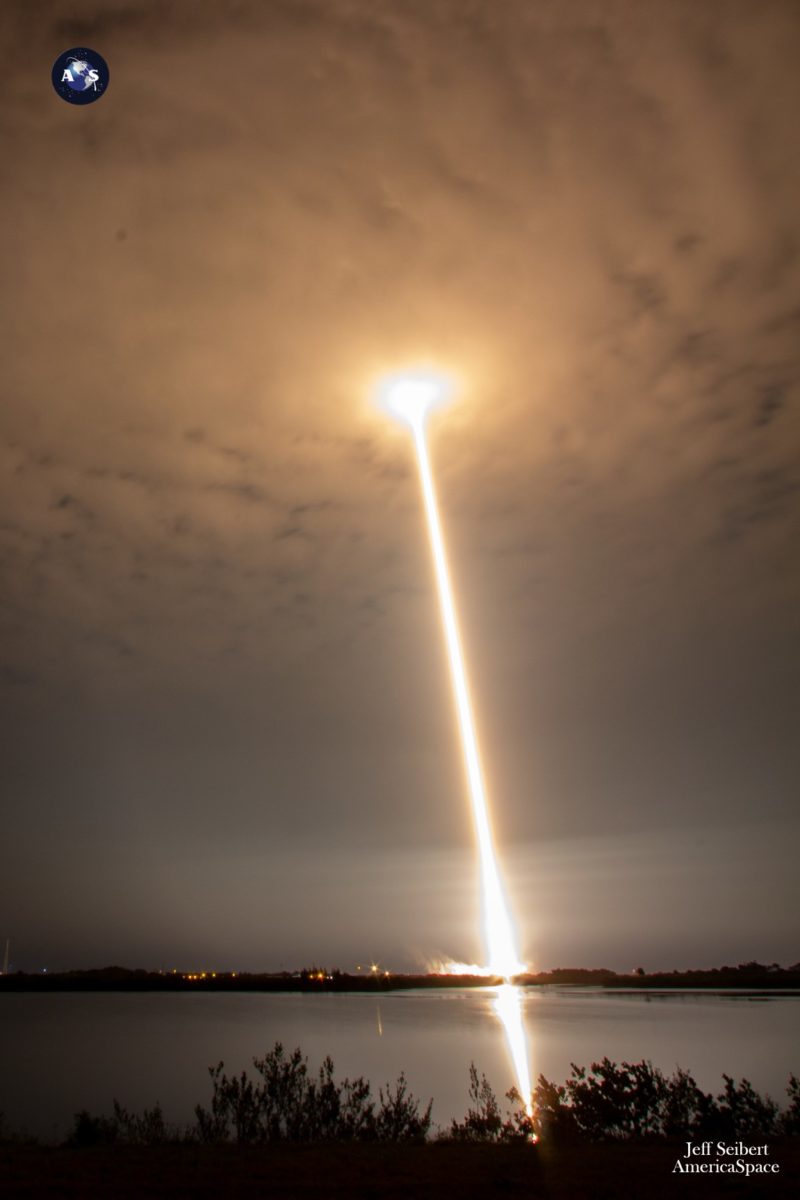
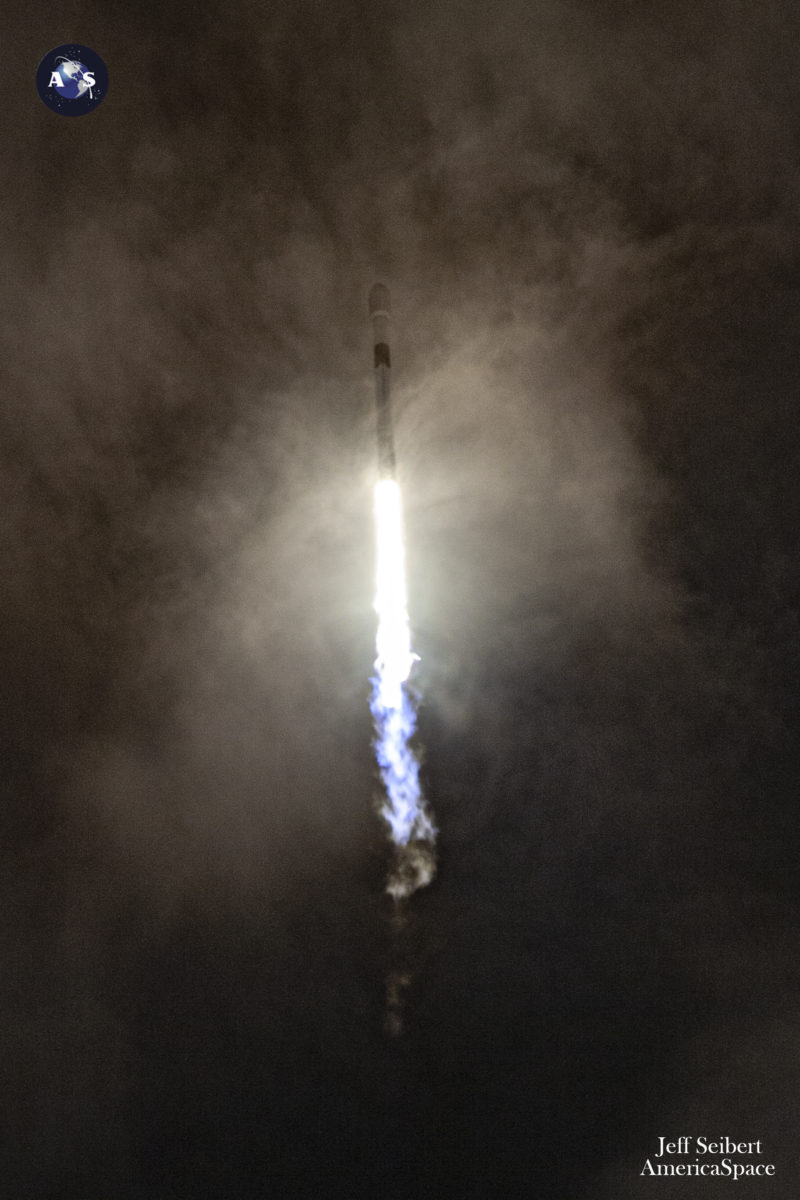
Weather conditions for Friday’s opening launch attempt promised around 90-percent favorability, deteriorating slightly to 80 percent in the event of a slip to Saturday. A potential violation of the Cumulus Cloud Rule on Friday, with an additional threat posed by the Thick Cloud Rule on Saturday, were described by the 45th Weather Squadron at Patrick Space Force Base as the two main areas of concern.
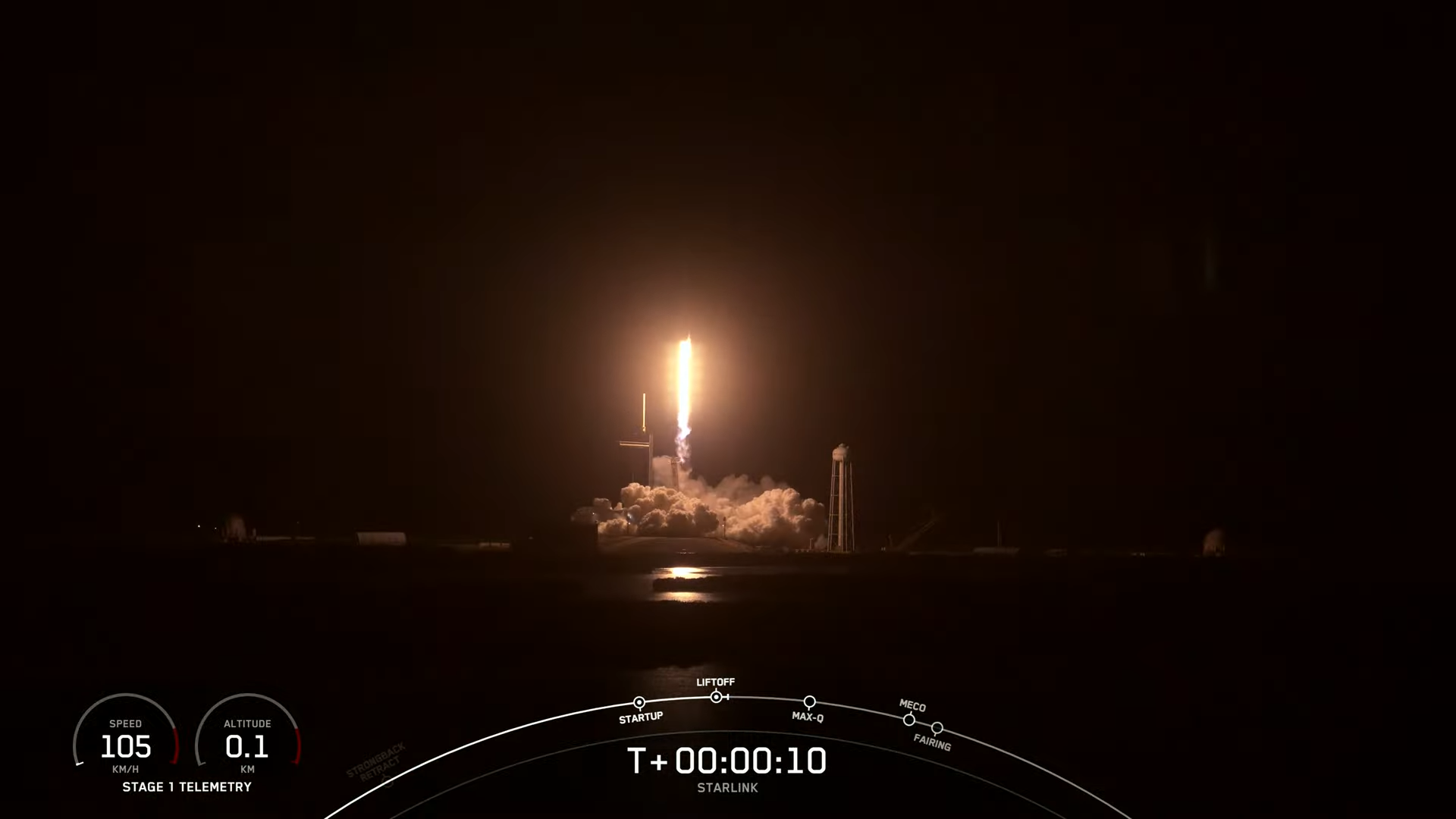
“By Friday morning, a mid-latitude storm system will move through the Mississippi Valley and push the high-pressure ridge father to our east,” the 45th announced in its Wednesday morning update, noting the progress of a mid-level ridge stalled over the western Atlantic since earlier this week. “This will cause our winds to shift to the south-southwest and offshore, which will lower the probability of morning showers impacting the Spaceport during the primary launch window.”
Last Monday, the newest addition to SpaceX’s ASDS fleet, “A Shortfall of Gravitas”, was towed out of Port Canaveral by the multi-purpose recovery vessel, “Doug”, bound for a location about 395 miles (635 kilometers) offshore. It was SpaceX’s 100th attempt to recover a Falcon 9 core on a drone ship since January 2015; of those 100 attempts, boosters have landed safely on an ASDS no fewer than 90 times. The most recent failure in February 2021 was followed by an unbroken chain of 39 successes, including this morning’s landing.
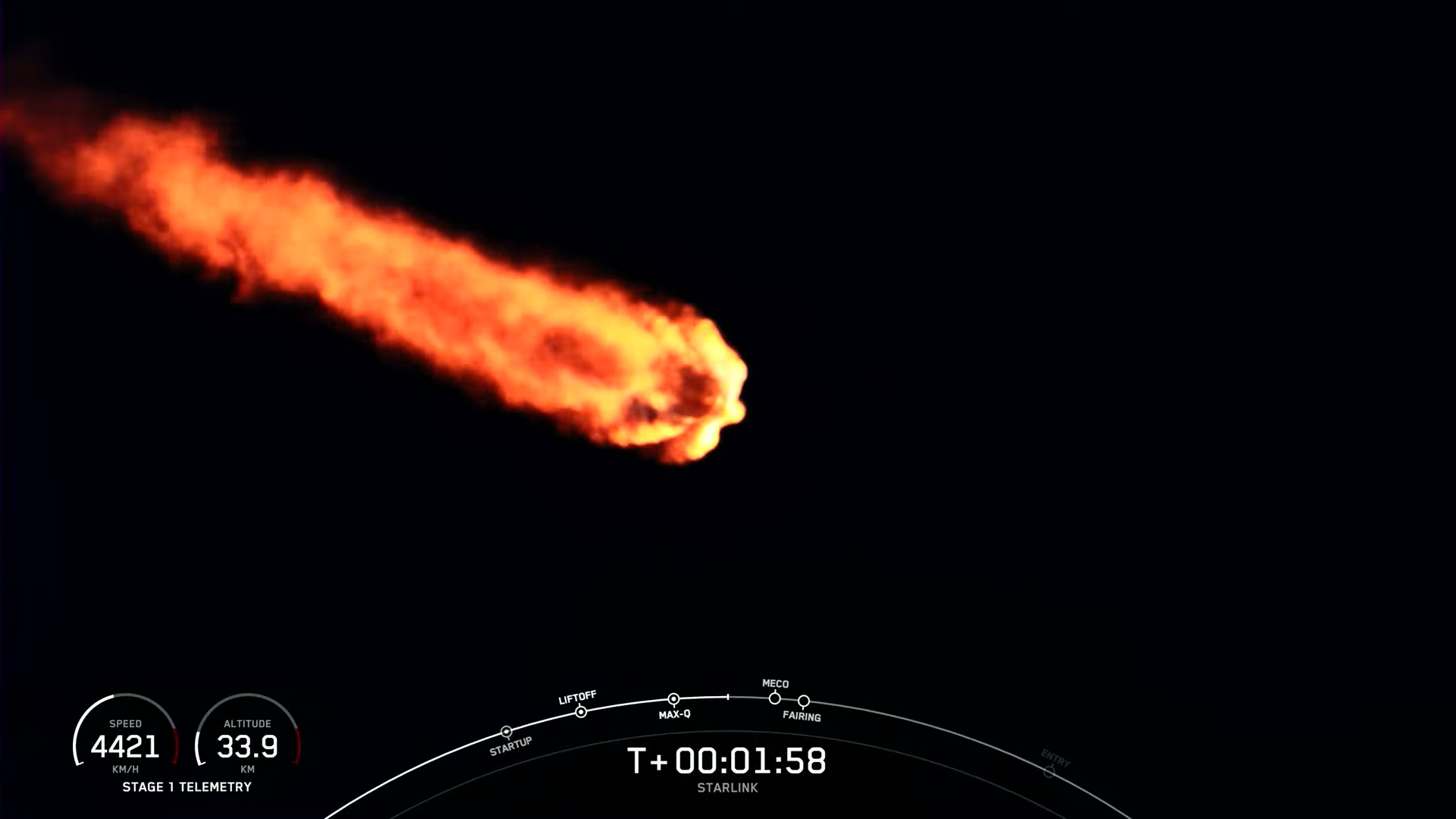
Blackened and scarred from her many prior launches and high-energy re-entries, B1058 and her shiny-new second stage were rolled out to Pad 39A on Thursday, only eight days after the historic pad bade farewell to Dragon Freedom and her ISS-bound crew of Commander Kjell Lindgren, Pilot Bob “Farmer” Hines and Mission Specialists Jessica Watkins and Italian astronaut Samantha Cristoforetti.
B1058 is one of SpaceX’s true history-makers, having entered service on 30 May 2020, when she lifted Dragon Endeavour and astronauts Hurley and Behnken on the first leg of their historic 64-day flight to the ISS. That flight saw a return of U.S. human spaceflight capability, aboard a U.S. spacecraft, atop a U.S. rocket, and from U.S. soil, since the end of the Space Shuttle Program more than nine years earlier.
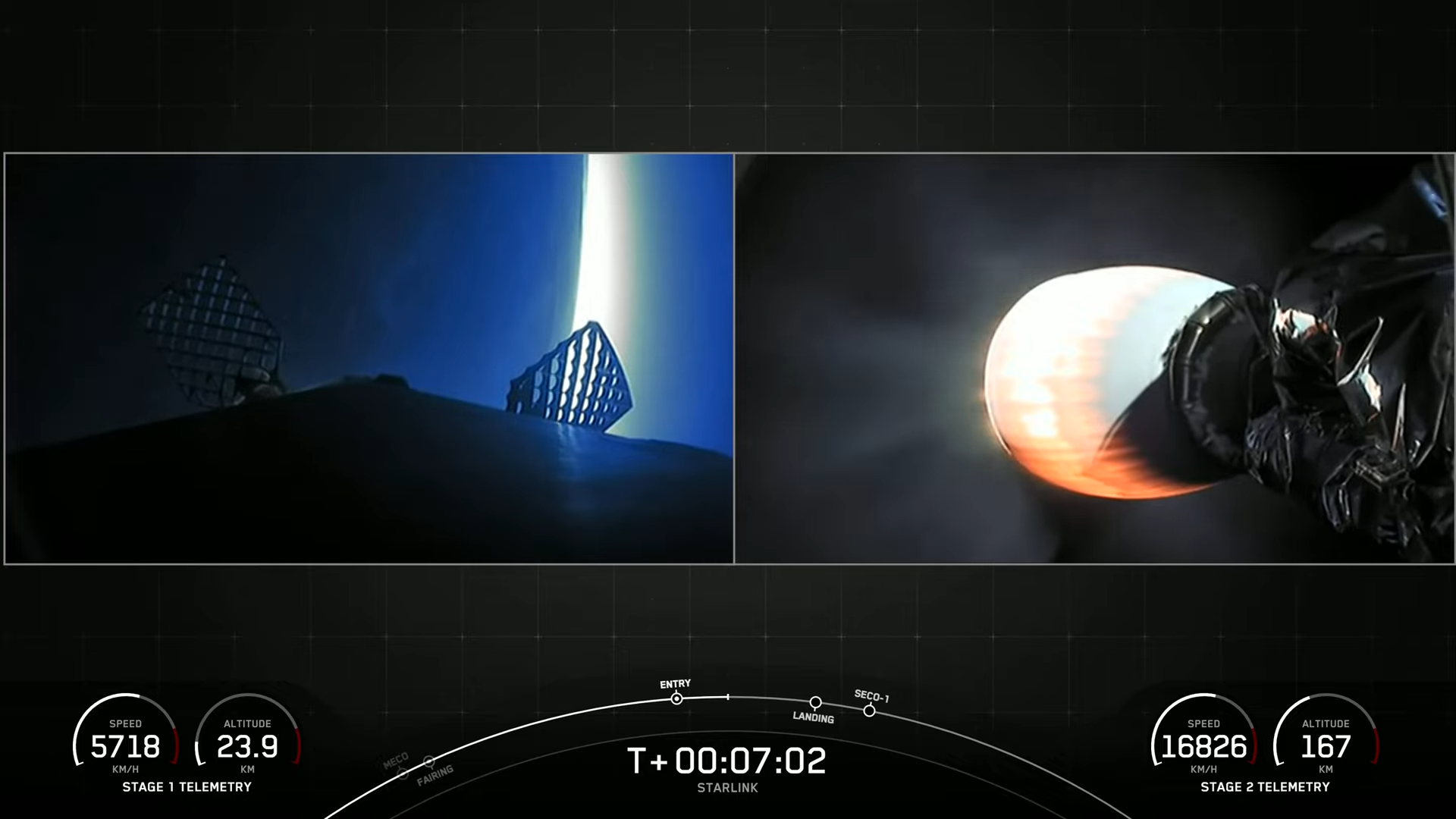
Since then, and including this morning’s launch, B1058 went on to log an additional 11 flights, lifting more than 535 discrete payloads into orbit, including 392 Starlink low-orbiting internet communications satellites. Her second flight, on 20 July 2020, carrying South Korea’s ANASIS-II military communications satellite, established a new record—now broken—of 51 days between two launches by the same orbital-class booster.
Seven dedicated Starlink missions between October 2020 and this morning were joined by CRS-21, the maiden outing of SpaceX’s upgraded Cargo Dragon, and the multi-payload Transporter-1 and Transporter-3 rideshares. These last two missions, which took place in January 2021 and January 2022, respectively, involved the delivery of 248 small satellites into orbit for commercial, international and U.S. Government entities. The Transporter-1 mission also marked the largest number of discrete payloads (143) ever placed into orbit by a single U.S. booster.
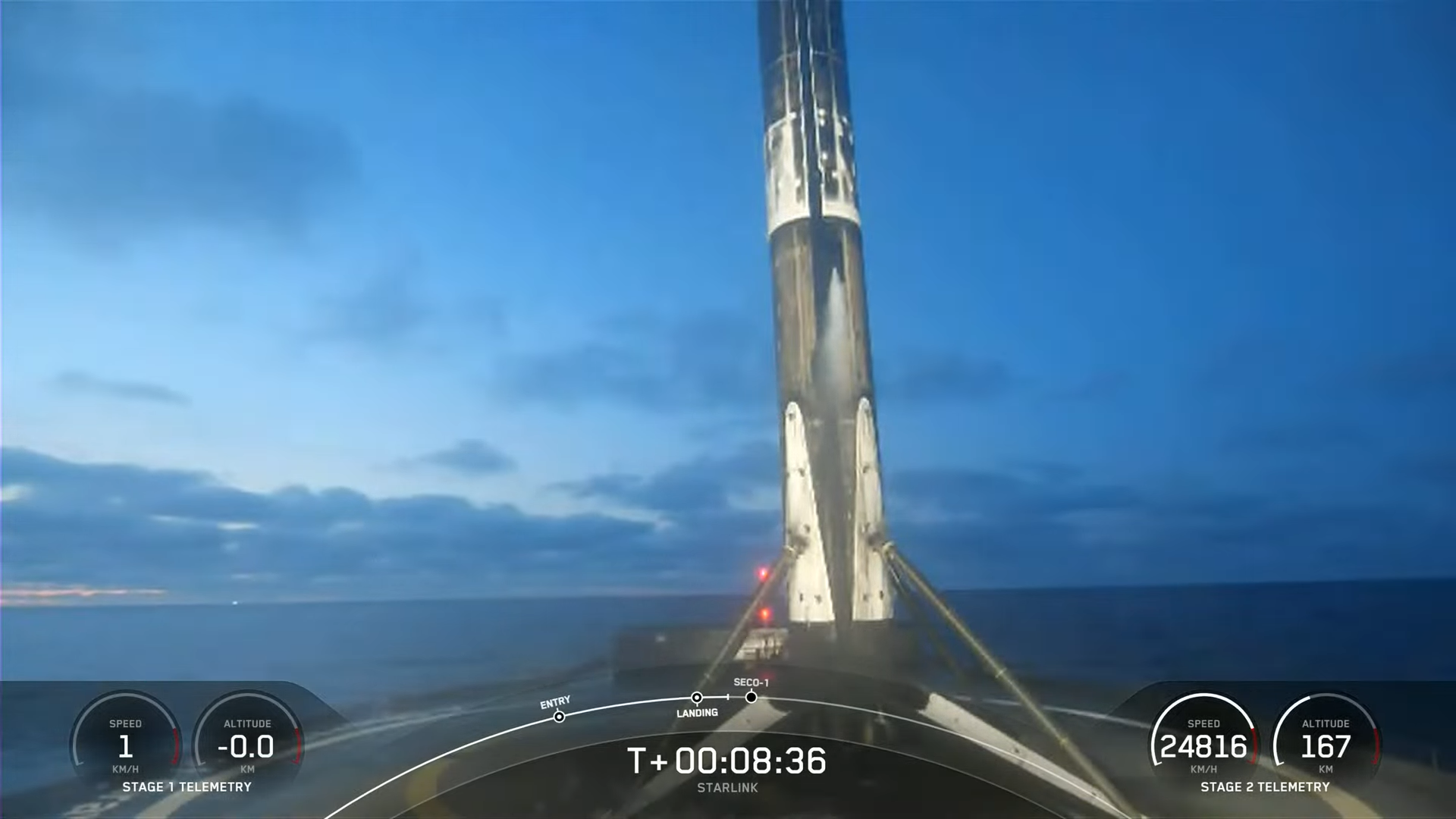
Friday’s liftoff came a little less than an hour before sunrise, providing spectacular viewing conditions along the Space Coast. B1058’s nine Merlin 1D+ engines burned furiously with a combined thrust of 1.5 million pounds (680,000 kilograms) for the first 2.5 minutes of ascent, before the core separated from the stack to commence a descent and safe touchdown on the ASDS deck. Meanwhile, the single Merlin 1D+ Vacuum engine of her second stage continued the push to orbit, delivering the 53-strong Starlink payload stack into orbit a little less than an hour after launch.
As many as four more Falcon 9s—three from the Space Coast and potentially one from Vandenberg Space Force Base, Calif.—may fly out the remainder of May. Primary payloads include additional Starlink satellites to fill the critical 53.2-degree-inclination orbital plane and the multi-payload Transporter-5 haul at month’s end. The latter mission’s exact payload-count remains to be seen, but is expected to include small spacecraft representing 16 sovereign nations and running the gamut from communications and technology development to Earth observations and amateur radio.




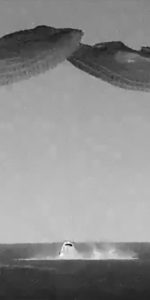
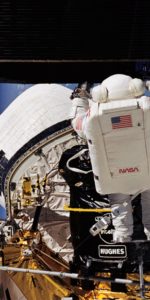
One Comment
One Ping
Pingback:SpaceX Launches Transporter-5 Rideshare , Wraps Up Multi-Mission May - AmericaSpace